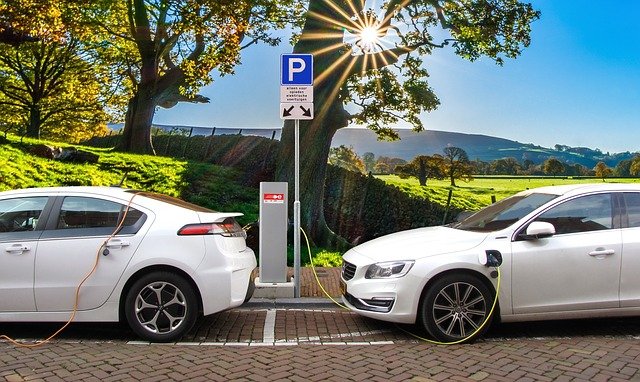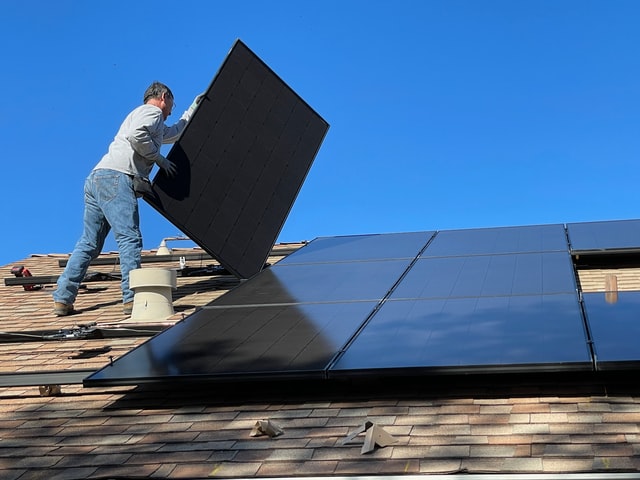
Over the past few years, the UK has been edging towards its goal of net zero by 2050. There has been a huge uptick in electric vehicle owners, we’ve seen more people take advantage of renewable tariffs, and the government has introduced more grants to help people afford these changes.
But what can we expect for the future? Check out our helpful guide below to find out which innovations you’ll likely see more of in the next few years – from wireless EV chargers to microwave boilers.
More homes will have EV charging points
The number of electric vehicles is on the rise – and the number of public charging points is following suit. In fact, data from Zap-Map shows that there are 8,471 charging locations across the UK, compared to only 8,400 petrol stations.
But we could soon see more people getting electric vehicle home chargers, since the government announced that all new homes and buildings in England will be required by law to install them from 2022.
How will this benefit EV owners? Not only will it be easier to charge your vehicle, but it’ll also be cheaper – by charging at home instead of in public, the average EV owner could save £180 per year.
To help with the upfront cost, the government has also introduced the Electric Vehicle Home charge Scheme, which can subsidise 75% of the cost of buying and installing a home recharging station, up to £350 (including VAT), for some homeowners.
Bear in mind that, from April 2022, this scheme will no longer be open to homeowners who live in single-unit properties such as bungalows and detached, semi-detached or terraced housing. Instead, it will be available for homeowners who live in flats and anyone living in rental accommodation.
Wireless EV charging will become more common
As it stands, there are 1.3 million electric vehicles in Britain. And, in a bid to encourage even more people to get EVs, some experts have created wireless EV charging.
Similar to how we charge phones wirelessly nowadays, static EV charging happens through a process called ‘inductive charging’, which works by transferring electricity from one magnetic coil in a charging pad to another coil fitted to your car.
This means drivers just have to park directly over the charging pad in order for the process to begin.
Some companies – including Char.gy, Qualcomm, and BMW – have already started rolling this out in the UK. Plus, the county of Nottinghamshire is even taking part in a trial analysing nine electric taxis using wireless charging, as part of the WiCET project.

Heat pumps will replace boilers
In a bid to reduce carbon emissions caused by home heating, the UK government is encouraging more people in the UK to swap their gas boilers for heat pumps. There are two types of heat pumps that homeowners can install:
- Air source heat pumps – these take heat from the air outside and use it to warm buildings and hot water systems
- Ground source heat pumps – these need to be connected to underground pipes, which absorb the Earth’s geothermal energy and use it to warm buildings and hot water systems.
To accelerate this transformation of the country’s home heating scene, the UK government has stated that it will also provide financial support to people swapping old boilers for heat pumps.
Through the Boiler Upgrade Scheme, homeowners in England and Wales will be able to get £5,000 off the cost of a new air source heat pump, and £6,000 off the price of a ground source heat pump, from April 2022.

New types of solar panels will become popular
Solar panels have been around for years at this point, with new models emerging in the market all the time. Alongside the cost, there’s another main factor putting people off solar panels: their appearance.
This is where solar tiles come in. These eco-friendly tiles work just like panels, by converting sunlight into electricity, but are made to look like traditional roof tiles.
Although solar panels are much cheaper and generally more efficient than solar tiles, they can often clash with a property’s appearance – especially on a listed building. So, any homeowners worried about ruining the look of their home by installing solar panels can now look into these inventive tiles instead.
But before you get too excited, note that solar tiles can cost at least twice as much as solar panels. For example, a 4 kW solar tile system will typically cost between £12,000 and £16,000, while a 4 kW solar panel system usually costs £5,760.
New eco-friendly alternatives to gas boilers will become more popular
Since gas boilers are on their way out, experts are having to come up with new ways to heat properties in the UK – without using fossil fuels.
Infrared heating panels
Rather than heating the air like conventional boilers do, infrared panels use radiation to heat objects directly – but don’t worry, these panels use ‘far infrared’, which is perfectly safe.
Unlike traditional boilers, infrared panels are quick and simple to install – the installer just needs to prop the infrared panels onto either a wall or the ceiling, and connect them to the electrical circuit.
Homeowners will be pleasantly surprised to hear that the starting price of infrared panels is only around £120. Just note that this figure will fluctuate depending on the type of panel you go for, as well as its size, design, and wattage.
Overall, a 600 W (watt) panel will cost roughly £230, and should be enough to heat a small room. That means that for a three-bedroom house you’ll be paying roughly £2,000–£2,500.
Hydrogen boilers
Hydrogen boilers work pretty similarly to conventional boilers, except they burn hydrogen instead of fossil fuels. These types of boilers also create hot flue gases – these can be used to heat water, which can then either be stored for later use or pumped to your radiators.
Despite their promising future, hydrogen boilers are still in the prototype stage, which means there aren’t any on the market at the moment. But manufacturers are confident that hydrogen boilers won’t cost any more than natural gas boilers when they’re finally released to the UK public.
Microwave boilers
Microwave boilers are very similar to conventional boilers, but instead of using combustion to generate heat, they use microwaves – a type of electromagnetic radiation.
Again, unfortunately, the world’s only microwave boiler is still in the prototype stage, but once it’s ready to be rolled out to the wider public, it should be able to reduce emissions massively.
Heat Wayv – the company behind the world’s only microwave boiler – stated that a unit for a three- or four-bedroom home would cost roughly £3,500.



